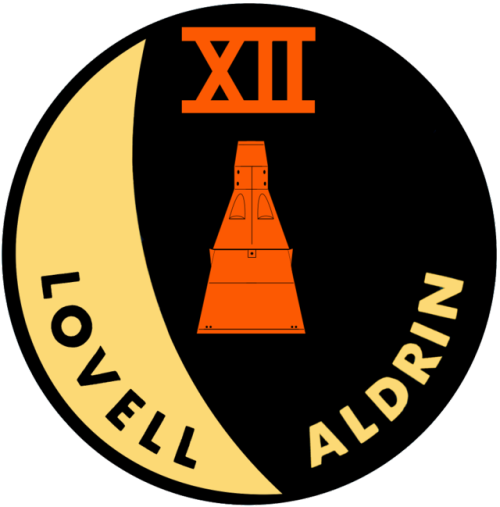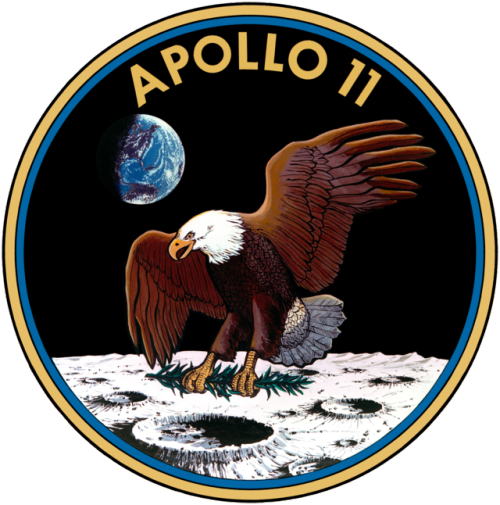This Website Pisses Me Off, Everyones Always Like “space Is So Cool!” Not Its Not, Space Is Bullshit
this website pisses me off, everyones always like “space is so cool!” not its not, space is bullshit and i hate everything about it, i genuinely just saw the phrase “a black hole with a mass two billion times the mass of the sun” im so pissed off, shut the fuck up, dont patronise me scientists you know i dont know what the fuck that means, my sad little brain cant comprehend the mass of one sun let alone two fucking billion, i cant even count past 10 without getting confused and youre out here talking about the mass of two billion fucking suns, shut the hell up. and dont even get me started about black holes or the expansion of the universe because thats another two seperate rants entierly. oh and apparently theres a planet made of ice except the ice is also on fire??? yeah sure fucking thing, scientists. and this is just the shit i know about. i purposely dont research space because it pisses me off so much, god knows what other fucking bullshit exists out there that ive yet to read a fucking wikipedia article about. i dont think space is real, literally everything about space is so fucking fake, this is just some elaborate fucking practicle joke. two billion times the mass of the sun, fuck you
More Posts from Maevetheeuropan and Others

What’s hard about Mars?
Mars, unlike the Moon, is far away. It also has an atmosphere - but not a useful one. Atmospheric density, wind, dust storms… all of these things contribute to a larger list of circumstances that any given mission needs to be ready for.
All those circumstances contribute heavily to the cost, time and hard resources needed to be poured into the mission preparation. In addition, the vast distance to Mars means the cost of carrying all this prepared hardware must be covered.
The atmosphere of Mars is such that if you’re going too fast during entry, you’ll burn up. It’s such a low density however that parachutes aren’t tremendously useful.
During the Curiosity rover’s landing it needed a heat shield, a supersonic parachute, rocket boosters to slow it down, a sky-crane to allow Curiosity to drop to the surface like an interplanetary spider and then explosive propulsion to send the platform it dropped from a safe distance away to crash into the surface.
During this landing, the rover experienced a force of about 15 g’s. That force would make a 200 lb man weigh 3000 lbs. Without proper precautions it would make the average head snap down at about 150 to 165 lbs.
NASA’s developing a new type of parachute and it’s being attached to a flying saucer-like spacecraft known as the Low-Density Supersonic Decelerator. This is currently hoped to provide NASA with a stable go-to architecture for future Mars missions.
The red planet’s killed most missions sent there. Power for solar-panels on rovers get covered during planet-wide dust storms. Some missions smashed into its moons. Some have smashed into its surface. Others have simply missions the planet entirely only to drift away as Mars dances around the Sun.
The world is an untamed place and has sought to buck all attempts to temper its mysteries.
(Image credit: ESA / DLR / FU Berlin (G. Neukum) / animation by Emily Lakdawalla)
LOL oh @claraxbarton you know me SO well!
I’ve totally got the first ep on my DVR - I just haven’t had time to watch it lol
@maevemauvaise !!!!!!!!!!!!
Okay now that I’m starting to get my ass in gear for astrophotography, I’d love it if some of y’all sated my need for attention and followed my instagram! I will return the favor of course
It’s mostly just space pictures, dogs, me, hiking stuff and lab stuff
Largest Batch of Earth-size, Habitable Zone Planets
Our Spitzer Space Telescope has revealed the first known system of seven Earth-size planets around a single star. Three of these planets are firmly located in an area called the habitable zone, where liquid water is most likely to exist on a rocky planet.

This exoplanet system is called TRAPPIST-1, named for The Transiting Planets and Planetesimals Small Telescope (TRAPPIST) in Chile. In May 2016, researchers using TRAPPIST announced they had discovered three planets in the system.

Assisted by several ground-based telescopes, Spitzer confirmed the existence of two of these planets and discovered five additional ones, increasing the number of known planets in the system to seven.

This is the FIRST time three terrestrial planets have been found in the habitable zone of a star, and this is the FIRST time we have been able to measure both the masses and the radius for habitable zone Earth-sized planets.
All of these seven planets could have liquid water, key to life as we know it, under the right atmospheric conditions, but the chances are highest with the three in the habitable zone.

At about 40 light-years (235 trillion miles) from Earth, the system of planets is relatively close to us, in the constellation Aquarius. Because they are located outside of our solar system, these planets are scientifically known as exoplanets. To clarify, exoplanets are planets outside our solar system that orbit a sun-like star.

In this animation, you can see the planets orbiting the star, with the green area representing the famous habitable zone, defined as the range of distance to the star for which an Earth-like planet is the most likely to harbor abundant liquid water on its surface. Planets e, f and g fall in the habitable zone of the star.
Using Spitzer data, the team precisely measured the sizes of the seven planets and developed first estimates of the masses of six of them. The mass of the seventh and farthest exoplanet has not yet been estimated.

For comparison…if our sun was the size of a basketball, the TRAPPIST-1 star would be the size of a golf ball.
Based on their densities, all of the TRAPPIST-1 planets are likely to be rocky. Further observations will not only help determine whether they are rich in water, but also possibly reveal whether any could have liquid water on their surfaces.
The sun at the center of this system is classified as an ultra-cool dwarf and is so cool that liquid water could survive on planets orbiting very close to it, closer than is possible on planets in our solar system. All seven of the TRAPPIST-1 planetary orbits are closer to their host star than Mercury is to our sun.

The planets also are very close to each other. How close? Well, if a person was standing on one of the planet’s surface, they could gaze up and potentially see geological features or clouds of neighboring worlds, which would sometimes appear larger than the moon in Earth’s sky.

The planets may also be tidally-locked to their star, which means the same side of the planet is always facing the star, therefore each side is either perpetual day or night. This could mean they have weather patterns totally unlike those on Earth, such as strong wind blowing from the day side to the night side, and extreme temperature changes.

Because most TRAPPIST-1 planets are likely to be rocky, and they are very close to one another, scientists view the Galilean moons of Jupiter – lo, Europa, Callisto, Ganymede – as good comparisons in our solar system. All of these moons are also tidally locked to Jupiter. The TRAPPIST-1 star is only slightly wider than Jupiter, yet much warmer.
How Did the Spitzer Space Telescope Detect this System?
Spitzer, an infrared telescope that trails Earth as it orbits the sun, was well-suited for studying TRAPPIST-1 because the star glows brightest in infrared light, whose wavelengths are longer than the eye can see. Spitzer is uniquely positioned in its orbit to observe enough crossing (aka transits) of the planets in front of the host star to reveal the complex architecture of the system.

Every time a planet passes by, or transits, a star, it blocks out some light. Spitzer measured the dips in light and based on how big the dip, you can determine the size of the planet. The timing of the transits tells you how long it takes for the planet to orbit the star.

The TRAPPIST-1 system provides one of the best opportunities in the next decade to study the atmospheres around Earth-size planets. Spitzer, Hubble and Kepler will help astronomers plan for follow-up studies using our upcoming James Webb Space Telescope, launching in 2018. With much greater sensitivity, Webb will be able to detect the chemical fingerprints of water, methane, oxygen, ozone and other components of a planet’s atmosphere.
At 40 light-years away, humans won’t be visiting this system in person anytime soon…that said…this poster can help us imagine what it would be like:

Make sure to follow us on Tumblr for your regular dose of space: http://nasa.tumblr.com

Mars Orbiter Mission: April 11, 2016 Clouds over Olympus Mons, April 11th 2016
Olympus Mons is a large shield volcano on the planet Mars. It has a height of nearly 22 km. Olympus Mons stands almost three times as tall as Mount Everest’s height above sea level. It is the youngest of the large volcanoes on Mars, having formed during Mars’s Amazonian Period. Several meteorological factors contribute to cloud formation. This MCC image was taken on April 11, 2016 at an altitude of 22,794 km and resolution of 1,185 meters. The image shows cloud around Olympus Mons Region.





2002: Buzz Aldrin punches conspiracy theorist, Bart Sibrel in the face for calling him a coward, a liar, and a thief for faking the moon landing.

NASA Is Considering A Deep Sleep Option for Mars Mission Crew
A NASA-backed study is exploring an innovative way to dramatically cut the cost of a human expedition to Mars — put the crew in stasis.
The deep sleep, called torpor, would reduce astronauts’ metabolic functions with existing medical procedures. Torpor also can occur naturally in cases of hypothermia.
“Therapeutic torpor has been around in theory since the 1980s and really since 2003 has been a staple for critical care trauma patients in hospitals,” aerospace engineer Mark Schaffer, with SpaceWorks Enterprises in Atlanta, said at the International Astronomical Congress in Toronto this week. “Protocols exist in most major medical centers for inducing therapeutic hypothermia on patients to essentially keep them alive until they can get the kind of treatment that they need.”
Coupled with intravenous feeding, a crew could be put in hibernation for the transit time to Mars, which under the best-case scenario would take 180 days one-way.
So far, the duration of a patient’s time in torpor state has been limited to about one week.
“We haven’t had the need to keep someone in (therapeutic torpor) for longer than seven days,” Schaffer said. “For human Mars missions, we need to push that to 90 days, 180 days. Those are the types of mission flight times we’re talking about.”
Impressive Payoffs
Economically, the payoff looks impressive. Crews can live inside smaller ships with fewer amenities like galleys, exercise gear and of course water, food and clothing. One design includes a spinning habitat to provide a low-gravity environment to help offset bone and muscle loss.
SpaceWorks’ study, which was funded by NASA, shows a five-fold reduction in the amount of pressurized volume need for a hibernating crew and a three-fold reduction in the total amount of mass required, including consumables like food and water.
Overall, putting a crew in stasis cuts the baseline mission requirements from about 400 tons to about 220 tons.
“That’s more than one heavy-lift launch vehicle,” Schaffer said.
The Big Chill
The study looked at a two-part system for putting Mars-bound astronauts in stasis and bringing them out. The cooling would be done through an internasal system, which Schaffer admits is “not very comfortable,” but inhaling a coolant has several advantages over reducing body temperatures with external cooling pads. Cooled from the outside, the body is more susceptible to shivering and possible tissue damage, Schaffer notes.
The so-called RhinoChill System lowers body temperature about 1 degree Fahrenheit per hour. Reaching torpor state — between 89 degrees and 93 degrees Fahrenheit — takes about six hours.
Simply stopping the flow of coolant will bring a person out of stasis, though the SpaceWorks study included rewarming pads as a backup and to speed up the waking process in case of an emergency.
An alternative to having the whole crew in stasis is to have one person awake for two to three days, then hibernate for 14 days. By staggering the shifts, no one person would be in stasis for more than 14 days at a time and one crewmember would be awake to monitor the ship, conduct science experiments and handle maintenance chores.
Schaffer also points to a potential psychological advantage to stasis.
“Rather than being stuck in a can for 180 days, you go to sleep, you wake up and you’re there,” he said. More research is needed to assure prolonged stasis is safe, but initial results are promising, Schaffer added.
“We have not seen any show-stoppers on the medical side or on the engineering side,” he said.
Space Station Research: Cardiovascular Health
Each month, we highlight a different research topic on the International Space Station. In February, our focus is cardiovascular health, which coincides with the American Hearth Month.
Like bones and muscle, the cardiovascular system deconditions (gets weaker) in microgravity. Long-duration spaceflight may increase the risk of damage and inflammation in the cardiovascular system primarily from radiation, but also from psychological stress, reduced physical activity, diminished nutritional standards and, in the case of extravehicular activity, increased oxygen exposure.

Even brief periods of exposure to reduced-gravity environments can result in cardiovascular changes such as fluid shifts, changes in total blood volume, heartbeat and heart rhythm irregularities and diminished aerobic capacity.

The weightless environment of space also causes fluid shifts to occur in the body. This normal shift of fluids to the upper body in space causes increased inter-cranial pressure which could be reducing visual capacity in astronauts. We are currently testing how this can be counteracted by returning fluids to the lower body using a “lower body negative pressure” suit, also known as Chibis.
Spaceflight also accelerates the aging process, and it is important to understand this process to develop specific countermeasures. Developing countermeasures to keep astronauts’ hearts healthy in space is applicable to heart health on Earth, too!

On the space station, one of the tools we have to study heart health is the ultrasound device, which uses harmless sound waves to take detailed images of the inside of the body. These images are then viewed by researchers and doctors inside Mission Control. So with minimal training on ultrasound, remote guidance techniques allow astronauts to take images of their own heart while in space. These remote medicine techniques can also be beneficial on Earth.
Make sure to follow us on Tumblr for your regular dose of space: http://nasa.tumblr.com
-
 lunarlilacs16 reblogged this · 2 weeks ago
lunarlilacs16 reblogged this · 2 weeks ago -
 thylacoleocarn liked this · 1 month ago
thylacoleocarn liked this · 1 month ago -
 lunarlilacs16 liked this · 1 month ago
lunarlilacs16 liked this · 1 month ago -
 a1t-ernative liked this · 2 months ago
a1t-ernative liked this · 2 months ago -
 puns-and-musicals liked this · 2 months ago
puns-and-musicals liked this · 2 months ago -
 hand-face-chan reblogged this · 2 months ago
hand-face-chan reblogged this · 2 months ago -
 le-cats-reblog-storage reblogged this · 3 months ago
le-cats-reblog-storage reblogged this · 3 months ago -
 le-cats-creative-corner liked this · 3 months ago
le-cats-creative-corner liked this · 3 months ago -
 0nothingatall liked this · 3 months ago
0nothingatall liked this · 3 months ago -
 stickymoonsoul liked this · 4 months ago
stickymoonsoul liked this · 4 months ago -
 wolphire liked this · 4 months ago
wolphire liked this · 4 months ago -
 lireb-librarian liked this · 4 months ago
lireb-librarian liked this · 4 months ago -
 brieflyannoyingandfunny liked this · 4 months ago
brieflyannoyingandfunny liked this · 4 months ago -
 yaoiwarriorrehab reblogged this · 4 months ago
yaoiwarriorrehab reblogged this · 4 months ago -
 yaoiwarriorrehab liked this · 4 months ago
yaoiwarriorrehab liked this · 4 months ago -
 novathehoe liked this · 4 months ago
novathehoe liked this · 4 months ago -
 ablubluh reblogged this · 4 months ago
ablubluh reblogged this · 4 months ago -
 arsonadvocate reblogged this · 4 months ago
arsonadvocate reblogged this · 4 months ago -
 banalhorrors reblogged this · 5 months ago
banalhorrors reblogged this · 5 months ago -
 unopposablethumbsao3 liked this · 5 months ago
unopposablethumbsao3 liked this · 5 months ago -
 4-vesta liked this · 5 months ago
4-vesta liked this · 5 months ago -
 lemonofthevalley liked this · 6 months ago
lemonofthevalley liked this · 6 months ago -
 icy-book reblogged this · 6 months ago
icy-book reblogged this · 6 months ago -
 icy-book liked this · 6 months ago
icy-book liked this · 6 months ago -
 transfemgrantwilson reblogged this · 6 months ago
transfemgrantwilson reblogged this · 6 months ago -
 transfemgrantwilson liked this · 6 months ago
transfemgrantwilson liked this · 6 months ago -
 y2ksnowglobe reblogged this · 6 months ago
y2ksnowglobe reblogged this · 6 months ago -
 thekuraning reblogged this · 6 months ago
thekuraning reblogged this · 6 months ago -
 corrach liked this · 6 months ago
corrach liked this · 6 months ago -
 pheonix-flies reblogged this · 6 months ago
pheonix-flies reblogged this · 6 months ago -
 darkfromday liked this · 6 months ago
darkfromday liked this · 6 months ago -
 nothinglikeweplanned reblogged this · 6 months ago
nothinglikeweplanned reblogged this · 6 months ago -
 meowluox liked this · 7 months ago
meowluox liked this · 7 months ago -
 birdsnarl liked this · 7 months ago
birdsnarl liked this · 7 months ago -
 mystic-musician liked this · 7 months ago
mystic-musician liked this · 7 months ago -
 flufkat liked this · 7 months ago
flufkat liked this · 7 months ago -
 plezdont liked this · 7 months ago
plezdont liked this · 7 months ago -
 bubblefarmer liked this · 7 months ago
bubblefarmer liked this · 7 months ago -
 echoislonely liked this · 7 months ago
echoislonely liked this · 7 months ago -
 gray-notacolorbutashade liked this · 7 months ago
gray-notacolorbutashade liked this · 7 months ago -
 radio-deathzone liked this · 7 months ago
radio-deathzone liked this · 7 months ago -
 strxnged liked this · 7 months ago
strxnged liked this · 7 months ago -
 crimeboys liked this · 7 months ago
crimeboys liked this · 7 months ago -
 lacystar reblogged this · 7 months ago
lacystar reblogged this · 7 months ago -
 lacystar liked this · 7 months ago
lacystar liked this · 7 months ago -
 altin-studies reblogged this · 7 months ago
altin-studies reblogged this · 7 months ago








